#ももあEGG
Explore tagged Tumblr posts
Text
📣半熟卵っちのSHIBUYAを聴きましたか?💫💕
youtube






2 notes
·
View notes
Text

ゆでたまごの つくりかたを まなぼう! Let's learn how to make a boiled egg!
とても かんたんだよ。 It's very simple.
まず、たまごを ひとつ えらんでね。 First, choose one egg.
たまごが われていないか たしかめてね。 Make sure the egg is not broken.
つぎに、たまごを おゆの なかに いれてね。 Next, put the egg in a pot of boiling water.
やく 10ぷんかん、 ゆでてね。 Boil for about 10 minutes.
そのあと、たまごを きをつけて とりだしてね。 After that, take the egg out carefully.
からを むいたら、 ゆでたまごが できあがり! After peeling the shell, the boiled egg is finished!
Learn with CrunchyNihongo.com -> https://bit.ly/2Zk4l4K
Verbs
学ぶ - manabu - to learn 選ぶ - erabu - to choose 割れる - wareru - to break (intransitive) 確かめる - tashikameru - to check, to confirm 入れる - ireru - to put in, to insert 茹でる - yuderu - to boil 気をつける - ki o tsukeru - to be careful, to pay attention 取り出す - toridasu - to take out 剥く - muku - to peel
Learn with CrunchyNihongo.com -> https://bit.ly/2Zk4l4K
Nouns
茹で卵 - yude tamago - boiled egg 作り方 - tsukurikata - how to make / method 簡単 - kantan - easy 卵 - tamago - egg 一つ - hitotsu - one (used for counting things) お湯 - oyu - hot water 中 - naka - inside 約 - yaku - about (used when talking about time) 分間 - punkan - minutes 殻 - kara - shell 出来上がり - dekiagari - finished, ready
Learn with CrunchyNihongo.com -> https://bit.ly/2Zk4l4K
#nihongo#jlpt#japan#japanese#nippon#kanji#hiragana#katakana#hiragana reading practice#hiragana practice
68 notes
·
View notes
Text
Utena Fansub Ep 15 release + Japanese vocab highlights

Last episode release I did a lot of textual analysis, because that was the most interesting part of the episode by far. This time, the episode was packed with interesting Japanese vocab, so I'll be focusing on that today!
ミルクセーキ作ったけど… 飲む?
I made some milk with honey. Want any?
If you’ve been following me since before the Utena fansub project, you’ll know that I sometimes post about what I call Trap Words in Japanese — loanwords that a typical English speaker might read and think “oh, thats a katakana-ised version of X” and be completely wrong about! For example, コンセント (konsento) is not “consent” but “power outlet/socket” (coming from a katakana conversion and then abbreviation of “concentric plug”). This is a mini trap words post!
I lied in this line. He didn’t make milk and honey. He made ミルクセーキ (mirukusēki). What is mirukusēki? A typical J→E dictionary would translate it as… Milkshake. But what a Japanese person imagines when they hear ミルクセーキ and what an English speaker imagines when they hear “milkshake” are COMPLETELY different.



I think of it like the word アニメ (anime). What does the Japanese word アニメ mean? It means “cartoon”. To a Japanese person, Tom and Jerry is アニメ. What does the English word “anime” mean? It means a specific style and genre of specifically Japanese animation. To an English speaker, Tom and Jerry is not anime. アニメ and “anime” are two different words with different meanings, despite sharing some history and sharing the same romanised form, because they are words in two different languages.
ミルクセーキ (mirukusēki) is a loanword from English which comes from “milkshake”, just like アニメ comes from “animation”. But a ミルクセーキ is not a milkshake. A ミルクセーキ usually contains eggs like an eggnog, it usually does not contain ice cream but instead crushed ice (thus being much less viscous), it’s seen as more of an after dinner nightcap type drink (similar to milk and honey!!) while the English “milkshake” is seen as a lunchtime drink usually accompanying fast food.
The Japanese wikipedia article for ミルクセーキ mentions that there are two types. One is “french style” which is the one Miki makes and the only thing that comes up if you put ミルクセーキ into google images. The other is “american style” and the reason it doesn’t come up on google images is because it’s much more often referred to as シェーキ (shēki) which when said aloud sounds much closer to “shake” than “sēki”. So the real translation for “milkshake” is シェーキ. What does that mean for ミルクセーキ ? Well, it’s its own thing! It’s a Japanese drink called mirukusēki that happens to be confusingly named after the English “milkshake”.
Anyway. I decided to translate this as “milk and honey” because that was the most appropriate term I could think of that they might drink in bed, presumably to help them sleep. Also the consistency and colour of the drink in the show looks kind of like milk and honey.

Miki: ちゅうちゅうってかわいいですね! Utena: ちゅうちゅうじゃなくて、チュチュだよ。ちゅうちゅうじゃまるでねずみじゃないか?
Miki: Choo-Choo is so cute, isn't he? Utena: It’s not Choo-Choo, it’s Chuchu. Choo-Choo makes him sound like a train.
This line was also a lie! Utena actually says “mouse” not “train”. チューチュー (chūchū — note the long vowel ū) is the Japanese onomatopoeia for a mouse squeaking (which you may know from Pokemon — Pikachu’s name comes from the sound of a sparkle, pika, and the sound of a mouse, chū). Utena’s actually pointing out that Chuchu is not quite a mouse, not quite a monkey.
The option most translators would opt for in this situation would be to translate directly and keep the “mouse” bit. But since this translation project prioritises natural language, I chose to make the comparison work with an English onomatopoeia. I want the audience to think “huh that was weird, I guess it was hard to translate that line” as LITTLE as possible!

んんー、ああ。君にも迷惑かけたな。実は迷惑ついでにちょっと相談があるんだミッキー。
Oh, fine. Sorry for worrying you. By the way, I had something I wanted to talk to you about. (note lack of green)
A more literal translation would be:
Oh fine. I worried you, didn’t I? Speaking of taking up your time, I had something I wanted to talk to you about.
迷惑 (meiwaku) is the sticky part of this translation. The Japanese concept of 迷惑 is quite strange to most English speakers. Here are some examples of when you might experience 迷惑:
When someone’s late and you need to wait for them.
When you’re going somewhere and someone sees you and pulls you aside into a conversation.
When you go to use a public toilet and the seat has piss on it.
Here are some examples that aren’t really 迷惑, but it’s polite to say that they are:
When you get hurt - apologise for causing 迷惑 to people who worried about you.
When someone does something nice for you - apologising for causing 迷惑 implies that they spent a lot of time for your benefit and you appreciate that.
I guess a good definition of 迷惑 would be “when someone’s actions cause someone else to lose time, money, or cause them to become upset.” But we don’t have a word for that in English that sounds right in this kind of context! There’s no word that can mean both “worrying someone due to a having a fall” and “taking up their time on the way to class”. So although the teacher says “speaking of 迷惑”, I just had to skip that part because I couldn’t work it in. I couldn’t make the two concepts connected enough for it to sound natural.

Thank you to my amazing editor @dontbe-lasanya for their great work as always!
Make sure to follow the blog if you want to see more posts like this, or if you just want to follow along with the fansub releases! To see all episodes released so far, go here:
Rose divider taken from this post
#langblr#japanese language#japanese#language learning#learning japanese#japanese vocab#translation#language#revolutionary girl utena#rgu#shoujo kakumei utena#sku#utena#utena fansub#official blog post
38 notes
·
View notes
Text
ことわざ 19/?
ことわざ are Japanese proverbs, and I have listed some basic proverbs, their equivalents in English, and a rough translation of the meanings of the Japanese phrase.
There is a test for ことわざ called the ことわざ能力検定 (ことわざのうりょくけんてい) and these are some of the phrases that appear in level 8 or 8級 (10 being the lowest level). For the time being, try one or two of these out the next time you speak with a native Japanese speaker!
More ことわざ (こと検9級): 11 | 12 | 13 | 14 | 15 | 16 | 17 | 18 Even More ことわざ (こと検10級): 1 | 2 | 3 | 4 | 5 | 6 | 7 | 8 | 9 | 10

青い鳥
あおいとり
happiness taken for granted
from the play The Blue Bird, where two siblings search for the bluebird of happiness while the bluebird was actually in a cage in their home all along
足元から鳥が��つよう
あしもとからとりがたつ
① suddenly
② without warning; out of nowhere
the way birds take off from under foot as you approach
虻蜂取らず
あぶはちとらず
one who runs after two hares will catch neither
a spider trying to get both flies and bees catches neither
蟻の穴から堤も崩れる
ありのあなからつつみもくずれる
little strokes fell great oaks
a hole dug by an ant can collapse a dam
蟻の歩み
ありのあゆみ
a snail's pace
an ant's walking pace
蟻の這い出る隙もない
ありのはいでるすきもない
a tight perimeter
so tight there is no space for an ant to crawl out
生き馬の目を抜く
いきうまのめをぬく
sharp as a tack
rip out the eye from a living horse
鶍の嘴の食い違い
いすかのはしのくいちがい
a difference of opinion; a discrepancy
a difference of opinion that doesn't line up like the bill of a crossbeak (bird)
鼬ごっこ
いたちごっこ
a game of cat and mouse
playing weasel
鼬の最後っ屁
いたちのさいごっぺ
hitting the panic button
a weasel's last-ditch fart
犬に論語
いぬにろんご
like talking to a wall
teaching the Analects of Confucius to a dog
犬の尾を食うて回る
いぬのおをくうてまわる
chasing your tail
a dog running in circles trying to bite its tail
犬は人に付き猫は家に付く
いぬはひとにつきねこはいえにつく
a dog is loyal to its master, a cat, to its home
a dog sticks by a person and a cat sticks with its home
犬は三日飼えば三年恩を忘れぬ
いぬはみっかかえばさんねんおんをわすれぬ
dog is man's best friend
feed a dog for 3 days, it won't forget that kindness for 3 years
烏合之衆
うごうのしゅう
a disorganized mob
like a group of crows together (also 烏合の衆)
牛に引かれて善光寺参り
うしにひかれてぜんこうじまいり
serendipity
from a story where an old lady sees the neighbor's cow pull her garment off the clothesline, so she chases it and ends up visiting Zenkoji Temple, where she is enlightened
牛の歩み
うしのあゆみ
a snail's pace
a cow's walking pace
牛を馬に乗り換える
うしをうまにのりかえる
to trade a loser for a winner
switch from riding a cow (slow) to riding a horse (fast)
有象無象
うぞうむぞう
the unwashed masses
all manner of beings having form or lacking form
鰻の寝床
うなぎのねどこ
a long, narrow interior
an eel's bed
鰻登り
うなぎのぼり
① upward momentum
② skyrocketing; going through the roof
a rising line that looks like an eel
鵜の真似をする烏
うのまねをするからす
a poor man's …
a crow imitating a cormorant
鵜呑みにする
うのみにする
① to take at face value
② to swallow hook, line and sinker
to swallow something whole like how a cormorant eats
鵜の目鷹の目
うのめたかのめ
search like a hawk
cormorant eyes and hawk eyes (birds that search for prey from the sky and dive in for the kill)
馬が合う
うまがあう
to get along well; to have a lot in common
like a perfect match of rider and horse
馬には乗ってみよ人には添うてみよ
うまにはのってみよひとはそうてみよ
walk a mile in someone else's shoes
ride a horse or spend time beside a person before you judge them
馬の背を分ける
うまのせをわける
raining here but clear the next town over
like how rain will divide a horse's back, water runs down one side and the other stays dry
馬の耳に念仏
うまのみみにねんぶつ
like talking to a wall
speaking Buddhist prayers into the ear of a horse
梅に鶯
うめにうぐいす
goes together like spaghetti and meatballs; goes together like eggs and bacon
goes together like plums and nightingales
燕雀安んぞ鴻鵠の志を知らんや
えんじゃくいずくんぞこうこくのこころざしをしらんや
the small-minded cannot comprehend the ambitions of the great
how can small birds like swallows and sparrows understand the will of large birds like geese and swans
老いたる馬は道を忘れず
おいたるうまはみちをわすれず
an old horse never loses its way
an old horse never forgets the road home
鸚鵡返し
おうむがえし
parroting; blindly repeating
returning words like a parrot
陸に上がった河童
おかにあがったかっぱ
a fish out of water
a kappa up on land
同���穴の狢
おなじあなのむじな
of the same stripe
badgers of the same hole
鬼が出るか蛇が出るか
おにがでるかじゃがでるか
what horrible fate awaits us…?
will a demon come out? or just a snake?
鬼の居ぬ間に洗濯
おにのいぬまにせんたく
while the cat's away the mice will play
laundry while the demon is not here (demon is a metaphor for the head of the household; 洗濯=命の洗濯 meaning to take a load off and relax)
鬼の首を取ったよう
おにのくびをとったよう
beaming with pride
like you took the head of the demon
鬼も十八、番茶も出花
おにもじゅうはち、ばんちゃもでばな
to everything there is a season
even demons are lovely at 18, a flower blooms even from Bancha (coarse tea)
尾鰭が付く
おひれがつく
embellished; a tall tale
a story with a tail fin stuck on
#日本語#japanese#japanese language#japanese langblr#langblr#studyblr#ことわざ#japanese proverbs#こと検8級#あ#あ~お#tokidokitokyo#tdtstudy
29 notes
·
View notes
Text
dude lol

uhh I dunno, maybe... 🥴






















"why not take a moment to look at their stomachs as well" uh sure, just a moment… I can do that yeah… 🤤 my friend I'm looking all the time it's the first thing I look at fgkjlkngjfkghg
can't believe the official JP acc talks about bellies and don't include their signature fat character with the most beautiful perfect soft egg shaped belly. you know I had to chime in ;P
#thanks for the excuse to post the bank again lol#dr. eggman#eggman#dr eggman#dr robotnik#sonic the hedgehog#my post
24 notes
·
View notes
Note
Hi there
I saw your post about Rellana & Messmer and i really want to know your interpretation of their relationship. Many insist on them being unrequited love but i couldn't really find any evidences that support this interpretation except Rellana's sword description in Eng because the Japanese version is different as it's says the fire & moon were always together .
Anon I am sorry I am so late fdhshf The usual: I was waiting to get to Messmer myself first after doing like 600 side things and then I forgor 😔
But for starters, a couple of funny things regarding the topic! First: I was actually dead sure they were canonically an item because of some thoughts I've heard from the fans early on!! And I got further into this confusion because I've misinterpreted Messmer's emblem as Fire + Twin Moon (since it is two circles overlapping and I first met it in the Castle Ensis), instead of Fire + Two Serpents that it IS! XD

Second: I was instantly confused by the description of Rellana's helmet, because Rennala has brown hair in both concept art portrait and the ingame model. So, the long black hair could not have been a cute parting gift, right....? Well, we resolved it with the help of analysing Japanese text more (this post ( x )), and turned out Rennala DID give her own hair! x) I suppose her hair, or the part that sticks from under the crown, became brown under prolonged strong Amber Egg's light exposure (basically same as sunlight)! However for a month I believed that Rennala simply helped Rellana to tweak her appearance with Amber Egg's magic to charm Messmer better because they knew long black hair was his taste HFSDHFDSGSDG XDDD
So, I was convinced that they were soooo married that they were proudly putting the symbol of alliance of Fire and Moon everywhere. The wording in English 'chase after Messmer' and fanart didn't help x) So.. now it had cleared up a little. As for the Japanese text you're referring to, me and @heraldofcrow asked someone else about it for clarification!

Japanese text breakdown from them is,
Ok, for the first one, she told me that the sentence/description, “ 月と火は、ここでは常に共にあった” has the word “常に” in it for “always.” (It’s “tsuneni” when Anglicized). This means “always, constantly.” So that one is correct. You have verify by even just looking up “tsuneni” in a Japanese dictionary, which I did. Seems right. So, yes the translation is “Moon and fire were constantly/always together here.”
I feel like this is further backed up by a certain other thing within Carians:

Notice how both swords also have identical skill; the use of sorcery with a normal attack after assuming the stance, and the use of fire with a strong attack! Both deal normal, magic and fire damage types! The only thing different is that since then, the celestial body representing the 'sorcery' part changed from stars to Moon, however Carians do not forget their roots!


So all flames, Messmer's included in the end, were an anathema to the Erdtree for the vision of the Cardinal Sin of burning it once (Fire Monks' incantations, Candletree Wooden Shield)!

I see it as Rellana deciding it was bullshit sentiment and actually sorcerers, whether Stars or Moon ones, were supposed to be allies to fire powers, like their origins intended! Liurnia/Carians and the Erdtree became allies after the war ended with Rennala's and Radagon's marriage... Whereas at first Rellana was okay with following the new obligation, for one reason or another she decided to REJECT THE MODERNITY AND EMBRACE THE TRADITION!

I am going to cuss localisation team again, because in Japanese original, the word that is here 'succor' is 癒 (月の輝きが、その男を癒せぬと知っていても) which means to heal! So, the sentiment is, her knowing that she could not fix him the horror plaguing him could not be treated, even with the magic/knowledge of Carians!

Black Knight Commander Andreas and his son Huw stood by Messmer until they've learned WHY Marika "abandoned her son". At this rate I need a T-Shirt that says 'You could never be Tanith' because I need it OFTEN in this DLC hfsdhfds . If Rellana knew of his affliction and still chose to stand by him, that puts her on the level with his Fire Knights, and even his snakes! And we know that Messmer still does need friends, not just his mom.


^ Unlike with the Cleanrot Knights of Malenia getting subjected to her Scarlet Rot by effect, Messmer's flame cannot infect others and it is just a curse for him and his two snake friends. However, Fire Knights attempted to share the burden with him and at least find the satisfaction in using his fire as is! Rellana is similar, because her fire sword IS serpentine and uses his fire:

(Video by Zullie the Witch ( x ))
After having all this context and clearing up my confusion, I think them having unrequited love is possible, but in the other way around! Say instead of her having "chased" him and him not feeling much in return, she had more ideals-fueled reasons to seek him and HE is the one hurting from not being loved the way he wishes!
According to Rogier sky sorceries of either king and the Erdtree were enemies, but sorcery and fire, on the other hand... And an "evil" kind of fire as well; the Fell God is literally named that, it is known as Flame of Ruin, even the Fire Giants carrying it for their god were said to have been burdened by it and it was an anathema to the Erdtree! Marika was not able to overcome her fear before the horror within Messmer although she tried her best to love him, but Rellana maybe decided 'yeah no shade to my sister's tastes but the plea to the Erdtree is kinda dumb, we sorcerers are supposed to be their enemies but allies to all kinds of evil fire! *looks at FF* EXCEPT THAT ONE' fsdhfds She could not heal him, but OG description of her sword makes it sound as though there is a "bigger idea" behind standing with him than just liking him. Aliance of sorcery and fire. She sees standing with him like more natural order and fate!
Messmer, on the other hand, would like to be liked (by her) on a more "primitive" level, without all that historical and philosophical nonsense! He is a person, not a symbol! ..but at the same time, he sorta knows he can't be. It is not just a problem with her, it is a problem with... everyone, really. He is carrying this curse and hates his fire, and to truly understand him would be to experience it the same way as he does. Something Fire Knights attempted to do, but it didn't work. But at the same time, he feels like even if he could infect people with his flame, he would not want to subject her to it in particular. With the Knights their honor kinda implies giving him their all, but despite her also being his blade he sees her as an equal! Someone who is better off not being burdened by his curse. Additionally, he already second-guesses whether he ruined her life by effect by """making""" her lose her right as a princess just to stand with him! Yeah, true, he needs Melina to lecture him on people's agency, but those with very low/negative opinion on selves OFTEN believe that they have more power over people than they actually do. Like they are "manipulating" them by literally just standing there (menacingly), and everything is always their fault..

So yeah! I think Rellana is a little 'clueless' about their bond, nor Messmer is doing enough to express his feelings! She sees them as Moon and Fire, not as Rellana and Messmer, and seems pretty content this way! He, on the other hand, would probably actually charm her romantically if he was not so gloomy and reclusive and put in conscious effort! He has a lot of charisma he is not using to get bitches when he CAN!! But he bounces between the 'why can't she like me in a more personal way?' vs 'wait, why WOULD she? it is better if she doesn't. damn I am an awful person as usual for wanting such thing.' ...🙄
They both have the capacity of developing relationship, but if Rellana is feeling attracted she is clueless about it simply because she won't think of it without being prompted to. With Messmer, he becomes STUPID vulnerable and self-conscious for multiple reasons pondering upon forming a bond this deep with her! I know it is an overused comedy trope, but picture Moonrithyll and [insert a Fire Knight] seeing the clear tension between the two and facepalming about how dumb they are about it XD Or, alternatively, trying to match-make them so they'd stop being so embarrassing and just fuck already lmaoooo fdghfsdg
__________________
Conclusion: both are too occupied with their own stuff to make a conscious effort towards it, but the potential and the tension is here! He has more talent for good romantic gestures and just the right tender things to say than he (or anyone else) realises that would make Rellana blush and stumble. Act slightly tsundereish, even, because she is not good at the "soft" things. She, on the other hand, is on more blunt side and her expressions of attraction would be passionate, and mostly vulgar I think. And that'd make HIM blush, because he is not good at THIS stuff! His style is some sentimental sweet line, her style is complimenting his slim ass or whatever fsdfsg Strong romantic energy from Messmer who dies at sexual commentaries, and strong sexual energy from Rellana who is no longer so tough at some nice poetry. Because they're "opposites" in such ways, there is a lot of awkwardness, but also a lot of dynamic!
(+A funnier interpretation is Messmer being romantic asexual that'd be still willing to have sex with someone he loves, and Rellana is aromantic sexual that'd still be okay with cuddles and kisses and stuff from someone she desires! They have each their own way to love and try to make it work. Just a more 'direct' version of the dynamic I've described previously, is this anything? xd)
#elden ring#messmer the impaler#rellana twin moon knight#what did we call this ship though? I genuinely don't know fhhfd#moonfire#ask replies#elden ring headcanons#screenshots
51 notes
·
View notes
Text
Azran Legacy Guidebook: Page 44
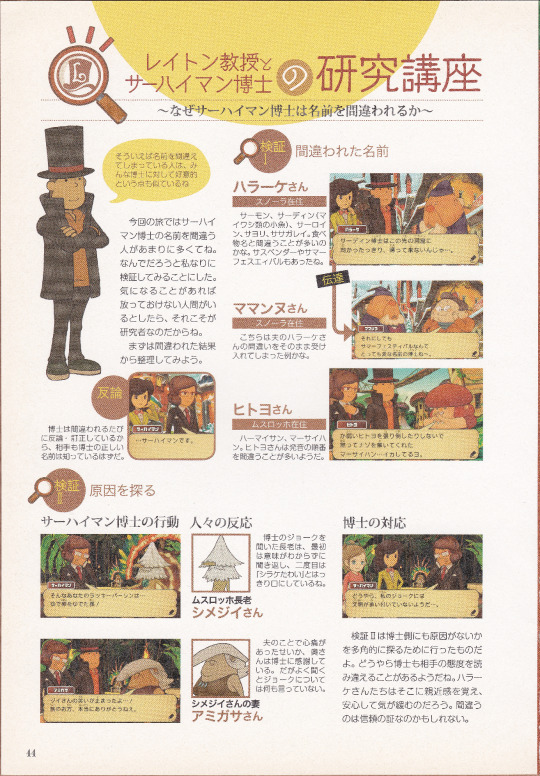
Professors Layton and Sycamore’s Lecture Course
Why is Professor Sycamore’s name so frequently mistaken?
On our trip, there were a lot of people who would get Professor Sycamore’s name wrong. Wondering why that was, I conducted my own investigation. If there is key characteristic to a researcher, it is that they can’t neglect when something is weighing on their mind. To begin, let us consider the mistakes that were made.
Each time they make the mistake, the professor will stop and correct them, so they surely know his correct name.
Investigation I: The Mistaken Name
Harald: A Froenborg resident (the things he calls Sycamore in Japanese): Salmon, sardine (a small type of pilchard), sirloin, sayori (stickleback), sasagarei (halibut). It seems he often mixes up the name with items of food. He also calls him suspenders and Summer-festival.
Mascha: A Froenborg resident This might be an example of her picking up her husband Harald’s error.
Amanita: A Phong-Gi resident Haamaisan, Maasaihan. Amanita often gets the syllables of his name the wrong way around.
“Now I think about it, the people who get his name incorrect are the ones who seem to have a fondness for the professor.”
Investigation II: The Cause
People’s reactions to Sycamore
(Screenshot of him telling the ‘Never judge a buck by its mother’ joke, except in Japanese its a completely different story about boiling eggs. I have a horrible translation of it here. )
Morel, the Chief The first time that he heard the professor’s joke, he didn’t understand its meaning, then he said clearly that he was bored.
Lepidella, Morel’s husband She’s been worried about her husband, so she is grateful to the professor. She doesn’t say anything about the joke, though.
Sycamore’s Response
To get a well-rounded perspective, a second investigation was conducted to see if the cause lay on the professor’s side. Somehow, he also manages to misread the feelings of others. Harald and the others feel a sense of closeness and at ease with him. Perhaps the fact that they make mistakes is a sign of their trust towards him.
研究講座 ~なぜサ ー ハイマン博をは名前を間違われるか~
「そういえは名前を間違えてしまっている人は、みんな博士に対して好意的という点も似ているね」
今回の旅ではサ ー 八イマン博士の名前を間違う人があまりに多くてね。なんでだろうと私なりに検証してみることにした。気になることがあれば放っておけない人間がいるとしたら、それこそが研究者なのだからね。ますは間違われた結果から整理してみよう。
博士は間違われるたびに反論・訂正しているから、相手も博士の正しい名前は知っているはずだ。
検証 I: 違われた名前
ハラーケさん スノーラ在住 サーモン、サーディン(マイワシ類の小魚)、サーロイン、サヨリ、ササガレイ。食べ物名と間違うことが多いのかな。サスペンダー やサマーフェス工イバルもあったね。
ママンヌさん こちらは夫の八ラ ー ケさんの間違いをそのまま受け入れてしまった例かな。
ヒトヨさん ムスロッホ在住 八一マイサン、マ ー サイ八ン。ヒトヨさんは発音の順番を間違うことが多いようだ。
原因を探る
サーハイマン博士の行動人々の反応
ムスロッホ長老シメジイさん 博士のジョークを聞いた長老は、最初は意味がわからずに聞き返し、ニ度目は「シラケたわい」とはっきり口にしている。
シメジイさんのアミガサさん 夫のことで心痛があったせいか、奥さんは博士に感謝している。だがよく聞くとジョ ー クについては何も言っていない。
博士の対応 検証Ⅱは博士側にも原因がないかを多角的に探るために行ったものだよ。どうやら博士も相手の態度を読み違えることがあるようだね。ハラ ーケさんたちはそこに親近感を覚え、安心して気が緩むのだろう。間違うのは信頼の証なのかもしれない。
41 notes
·
View notes
Text
SplatoonNA:
More info from the world of order!
Mobility color chips can not only increase your movement while in Octoling & swim forms, but can blow enemies back on contact and fill your special meter just by moving!
EN video
SplatoonJP:
【Side Order】
秩序の世界の様子を記録した動画が届いたぞ。
「ムーブ」系統のカラーチップをパレットにセットすると、タコやヒト状態の速度が上がる他、塗り進んでテキにぶつかったときに吹き飛ばしたり、移動するだけでスペシャルゲージが溜まったりする。
縦横無尽に動き回って場面を制圧しよう。
SplatoonNA:
It appears each floor in the Spire of Order has a different objective, such as destroying all enemy-spawning portals, securing areas, guiding a ball to the goal, and moving a tower forward.
Make sure to factor in your skills, the rewards, and the difficulty before you choose!
SplatoonJP:
【Side Order】
秩序の塔ではフロアごとにクリア条件が設定されているぞ。
テキの発生元を全て破壊するものや、エリアを一定時間確保するもの、ボールをゴールまで運ぶもの、ヤグラを進めて行くものなど、それぞれ対応方法が異なる。自分の技術と難度、得られる報酬を見極めてフロアを選んでいこう。
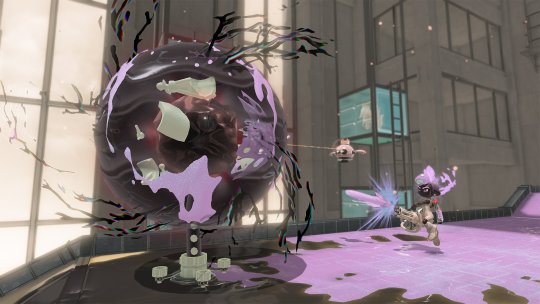
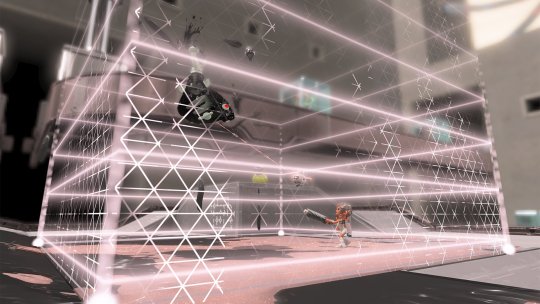
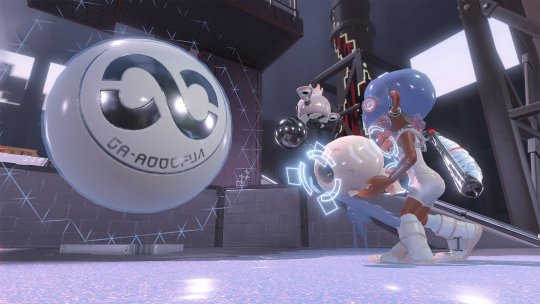

SplatoonNA:
A note for the part-timers! Bonerattle Arena, the final map for Salmon Run, arrives with Fresh Season 2024!
A place of exile that’s been modified into an arena, Salmonids battle day and night here to see who’s strongest.
They’re equally eager to fight anyone after their eggs.
SplatoonJP:
ここは「どんぴこ闘技場」。
サーモンランの最後の追加ステージだ。
流刑地を改造して作られたこの闘技場では、より強く、よりおいしいシャケを決めるための決闘が日夜繰り広げられている。
挑戦するイカたちに対しても、彼らはやる気満々のようだ。
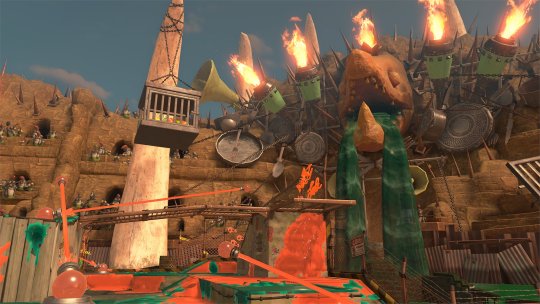

SplatoonNA:
A Grizzco industries rep has asked us to relay the following:
“Due to recent financial windfalls, additional slopsuits, gear, banners, decorations, stickers and more will soon be made available for purchase by Salmon Run employees. Keep it up.”
SplatoonJP:
シャケのウロコと交換できる景品も続々と追加されるぞ。
バイト作業着の新たなバリエーション、バトルで使える一風変わったギア、プレート、オキモノ、ステッカーなど、気になる景品が目白押しだ。
これはウロコがいくつあっても足りないな……。

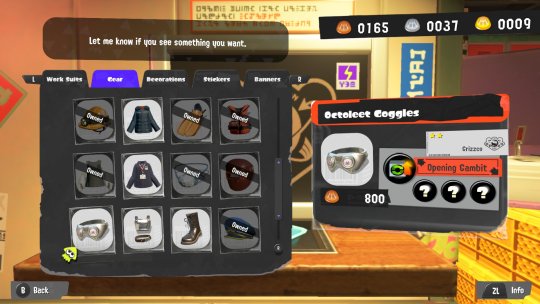

Continuation
59 notes
·
View notes
Text
youtube
今回の動画では、材料たった3つで作れる、チョコレートケーキをつくりました!
濃厚でしっとりしていながら、口触りが滑らかで軽くて、とっても美味しいケーキです。
オーブン、卵、小麦粉が必要ないのも手軽で嬉しい一品です! 興味あるのある方は、是非ご覧下さい😊
My new video is up on my YouTube channel!
I made an easy and delicious chocolate cake with only 3 ingredients. No oven, no egg, no flour!
It’s rich, moist and chocolaty. Super yummy 😋
Enjoy!
Please subscribe to my channel of you like to get new recipe videos like this every week! ❤️
#YouTube#delicious#food#nyc#dessert#Oreo#cookies#cake#easy recipe#chocolate cake#デザート#ケーキ#手作り#レシピ#簡単レシピ#チョコレート#オレオ
115 notes
·
View notes
Photo

安川康介@米国内科専門医さんはTwitterを使っています:「アメリカのレストランで"How do you like your eggs?"といきなり聞かれて「えーっと、えーっと(どんな種類があるんだっけ?とりあえず知っているこれでいこう)sunny-side up please」と答えたことがある日本人は多いと思います。僕もそうでした。これがいつの日か役に立つかもしれません。」
158 notes
·
View notes
Photo


Fujichi Instagram: @fj__1888 @ryu_since2012 さん♡♡ 天才カメラマン☆ eggトライアウト🥚面接の動画見てくれたかな??♡♡ 沢山推してる!ってコメントありがとうございます¨̮⃝†❤︎ これからももっと推してもらえるよーにがんばろ🔥(><)
#Fujichi#egg 雑誌#egg Magazine#LOALO#LOALO 雑誌#LOALO Magazine#Gyaru#GAL#Kuro Hada#Kuro Gyaru#Kuro GAL#96 Gyaru#96 GAL#Tsuyome#Tsuyome Gyaru#Tsuyome GAL
143 notes
·
View notes
Quote
日本語では一つの名前で表されるのに英語だと二種類以上あるもの
[B! 増田] 日本語では一つの名前で表されるのに英語だと二種類以上あるもの
たとえばつぎのようなもの、というお題。
亀 - Turtle (海亀)、tortoise (陸亀) ワニ - Alligator, Crocodile
- - - - - - - - - - - - - - - -
はてなブックマークがトリビアの披露大会になっていて、知識が集まってる。 逆パターンも 「英語では一つの名前で表されるのに日本語だと二種類以上あるもの」
- - - - - - - - - - - - - - - -
日本語では一つの名前で表されるのに英語だと二種類以上あるもの
聞く:hear, listen 見る:see, look, watch 海:sea, ocean, waters, marine(海の) 仮説:hypothesis, assumption 罪:crime, sin (「罪と罰」の罪は以外なことにcrimeのほう *)
英語では一つの名前で表されるのに日本語だと二種類以上あるもの
Museum:美術館、博物館 Requirement:要件、要求 Space:空間、宇宙
- - - - - - - - - - - - - - - -
「総称だけ存在して、細かな違いを呼び分けない」ものと、「総称は無いが、個々の細かな呼び分けだけある」ものに分けられるかも。 総称:亀 / 個々に:Turtle (海亀)、tortoise (陸亀) 総称:皿 / 個々に:dish、plate、saucer 総称:brother / 個々に:兄、弟
- - - - - - - - - - - - - - - -
秋のAutumnとFallのパターンは、意味もニュアンスも同じで、言い方が違うだけかな。 Fallが「秋」「落下」の2つの意味。
- - - - - - - - - - - - - - - -
仕事(taskとworkとjob)
槍:スピア、ランス、ジャベリン、トライデント。/悪魔:デビル、デーモン
managementもadministrationも(場合によってはcontrolも)「管理」、featureもfunctionalityも「機能」
一番有名なのはネズミ(mouse, rat)だと思ってた。他にもphantom/ghost、coast/beach、house/home、college/university、space/universe、earth/globeとか。厳密には意味が違うんだろうけど。
カラスのravenとcrow。
好き(loveとlike)/時計(clockとwatch)/サイン(sign、signatureとautograph)
言語とその話者の世界観が相関することは言語的相対論と呼ばれる。国がcountry, nation, stateに分かれるのは島国と多民族大陸国との違い。https://gijodai.jp/library/file/kiyo2011/yoshitaka_sato.pdf
ApeとMonkey
AlligatorとCrocodileの違いは、口を閉じたときに下の歯が見えるかだって伊豆で習った。
ちょっと違うが、"将来に対する希望"と、"睡眠中の幻覚体験"を日本語でも英語でも「夢 dream」という一語で表現するのは全くもってピンと来ない。
麦は日本語でも大麦・小麦・ライ麦・エン麦は区別はしてるけど、英語ではbarley wheat rye oatで「麦」に対応する単語がないのよね
アプリ開発で Apple の審査担当とやり取りする際「修正」の言い方が複数あって fix, correct, modify, revise, alter などを使い分けてくるので毎回意図を汲みとれてるか不安になる。(まあ日本語にも修正の類語いっぱいあるけど)
「毒」 poison / venom / toxin
romanceとnovel。romanceは通常騎士道物語など物語と訳されるのだけど、小説と訳されているときもある。
CollegeとUniversity
試験: 学力・知識を問う→examination,quiz,test 評価や実験→experiment 試みる→trial▼ただ「試験」で纏められるだけで日本語でも「考査」「実験」「試行」と分けて書くこともできるが。
自由(Liberty,Freedom)。契約などの法律上のやり取りが単語を増やした気もする。
紫→purple,violet
夫、旦那、亭主、主人→husband
足の指(toe)もfinger じゃない
日本語において、髭は全て「髭」で、生えてる箇所を限定する場合は「顎髭」や「頬髭」などと熟語で表現するが、英語ではそれぞれの箇所に単語がある。
リス:squirrel、chipmunk
馬車がとてもややこしくて面倒くさい / 辻馬車 cab, hansom 荷馬車 (horse)cart, wagon, (horse-drawn)carriage, horse and buggy 駅馬車 stagecoach 二輪馬車 curricle, tilbury ,jaunting car ,jinker 馬二輪戦車 chariot まだまだいっぱい…
今話題のsexとgender
政治家 politician / statesman たまご egg / spawn / roe ちなみに逆もあってegg 卵 / 玉子
この手の単語なら調理法が多い。アメリカは焼く文化だ。肉、パン、物で違う(Grill、Bread、Burn、BBQなんてのも)一方で日本は煮る文化だ。煮る、茹でる、炊く、煮込む。英語はBoil、あるいは残り全てはCookだ。
おじさんとおばさん、日本語でもこだわりがある場合には年上か年下で漢字が違うらしい。中国語では母方と父方で別の名前になる。
- - - - - - - - - - - - - - - -
知里真志保によれば、大和民族が川の始まりと考える「みなもと(源)」をアイヌ語では「川の終り」と言うのだという。つまりアイヌは川を海の方から見ているのだと。
コメントで日本語は部位に依らず「髭」だけってあるけど、いちおう漢字だと「髭(くちひげ)」と「鬚(あごひげ)」と「髯(ほおひげ)」で使い分けられる。発音はぜんぶ「ヒゲ」だけど……
- - - - - - - - - - - - - - - -
言語学で言うところの有標と無標も関係してそう。 作家:男女問わず作家の全般、女流作家:作家の中で女性の場合
標識 (言語学) - Wikipedia
英語のlionは雄雌どちらのライオンも表すが、lionessは雌だけである。前者が無標で後者が有標である。
131 notes
·
View notes
Text
Learn Japanese with Easy Story!

ゆで卵の作り方を学ぼう! Yude tamago no tsukurikata o manabou! Let's learn how to make a boiled egg!
とても簡単だよ。 Totemo kantan da yo. It's very easy to do.
まず、卵を一つ選んでね。 Mazu, tamago o hitotsu erande ne. First, pick an egg.
卵が割れていないか確かめてね。 Tamago ga wareteinai ka tashikamete ne. Make sure the egg is not broken.
次に、卵をお湯の中に入れてね。 Tsugi ni, tamago o oyu no naka ni irete ne. Next, put the egg in a pot of boiling water.
約10分間、ゆでてね。 Yaku 10-punkan, yudete ne. Let it cook for about 10 minutes.
そのあと、卵を気をつけて取り出してね。 Sono ato, tamago o ki o tsukete toridashite ne. After that, take the egg out carefully.
殻をむいたら、ゆで卵ができあがり! Kara o muitara, yude tamago ga dekiagari! Peel off the shell, and your boiled egg is ready! Learn with CrunchyNihongo.com -> https://bit.ly/2Zk4l4K
まなぼう (manabou) – let's learn えらんで (erande) – choose (te-form of えらぶ) われていないか (wareteinai ka) – is not broken (negative form of われる / wareru) たしかめて (tashikamete) – check (te-form of たしかめる / tashikameru) いれて (irete) – put (te-form of いれる / ireru) ゆでて (yudete) – boil (te-form of ゆでる / yuderu) きおつけて (ki o tsukete) – carefully (te-form of きをつける / ki o tsukeru) とりだして (toridashite) – take out (te-form of とりだす / toridasu) むいたら (muitara) – after peeling (tara-form of むく / muku) Learn with CrunchyNihongo.com -> https://bit.ly/2Zk4l4K
ゆで たまご (yude tamago) – boiled egg つくりかた (tsukurikata) – how to make / method かんたん (kantan) – easy たまご (tamago) – egg ひとつ (hitotsu) – one (used for counting things) おゆ (oyu) – hot water なか (naka) – inside やく (yaku) – about (used when talking about time) ぷんかん (punkan) – minutes から (kara) – shell できあがり (dekiagari) – finished, ready (from できあがる / dekiagaru)
Learn with CrunchyNihongo.com -> https://bit.ly/2Zk4l4K
#nihongo#jlpt#japan#nippon#japanese#kanji#hiragana#katakana#hiragana reading practice#hiragana practice
56 notes
·
View notes
Text
神奈川県
Japanese Prefectures: Kantō - Kanagawa
都道府県 (とどうふけん) - Prefectures of Japan
Learning the kanji and a little bit about each of Japan’s 47 prefectures!
Kanji・漢字
神 かみ、かん~、こう~、シン、ジン、かな gods, mind, soul
奈 いかん、からなし、ナ、ナイ、ダイ Nara
川 かわ、セン stream; river
県 ケン prefecture
関東 かんとう Kanto, region consisting of Tokyo and surrounding prefectures
Prefectural Capital (県庁所在地) : Yokohama (横浜市)

Kanagawa Prefecture is located just south of Tokyo. It is home to many day trip destinations from Tokyo, including the cities of Kamakura and Hakone. The prefectural capital of Yokohama on the Pacific coast is Japan's second largest city and its major port, including many multicultural influences such as a China Town and the Minato Mirai building. The port areas are also major centres of bonito and tuna fishing. Inland, Kanagawa has a flourishing agricultural area producing flowers and dairy products for the Tokyo market.
Recommended Tourist Spot・おすすめ観光スポット The Great Buddha of Kamakura - 鎌倉大仏

The Great Buddha of Kamakura (source)
At the Buddhist temple Kotoku-in (高徳院) in Kamakura stands the 11-metre tall 13th-century bronze statue of Amida Buddha. Initially housed in a wooden hall, it was restored in the Edo period (1603-1868) after being damaged over the years by typhoons and earthquakes and now towers over the grounds of the temple. The Great Buddha of Kamakura is the second largest seated Buddha in Japan.
After you visit the Great Buddha, you can also find other Zen Buddhist temples, which are among the oldest and most beautiful in the country, and most in walking distance from each other. Enoshima and the Kamakura beaches are also nearby.
Regional Cuisine - 郷土料理 Kuro-tamago (Black eggs) - 黒卵 (くろたまご)

Kuro-tamago or Black eggs (source)
It may seem strange, but this popular souvenir from the Owakudani (大涌谷 or Great Boiling Valley) in the resort town of Hakone in Kanagawa Prefecture gets its distinctive black color from being boiled in natural hot spring water for 60 minutes at a temperature of 80°C, then steamed at 100°C for 15 minutes in steel baskets over natural hot spring water. The natural hot spring water contains sulfur and iron, thus turning the egg shells black. The Kuro-tamago, or Black Eggs, have a slight sulfur smell (although the whole valley has this smell so you might not notice). They are safe to eat and are said to add 7 years to your lifespan! (You shouldn't eat more than two at one time though, as the lifespan elongating effects will then be nullified, or you might just feel slightly sick).
Owakudani is an active volcanic valley that is known to locals as Jigokudani (地獄谷 or Valley of Hell) due to the sulfurous volcanic gasses and steam from the natural hot spring waters. There are many resorts nearby in Hakone which tap into these natural hot springs. The valley was formed due to the last eruption of Mt Hakone about 3,000 years ago. On clear days, you have a great view of Mt Fuji. There is also a ropeway that will take you over the active volcanic area, but sometimes it can be closed when the volcanic activity picks up and the volcanic gasses increase, so check before you visit.
Kanagawa Dialect・Kanagawa-ben・神奈川弁
Kanagawa-ben is a basket term used to describe the dialects spoken in the prefecture, but there is no single unified dialect.
1. うんめろ unmero very, a lot
うんめろ美味しい (unmero oishii)
Standard Japanese: たくさん、とても (takusan, totemo)
とても美味しい (totemo oishii)
English: very, a lot
very delicious
2. あんきだ anki da I'm relieved, it's a relief
おめーらガ、みんなこどまーでけーからあんきだなー (omeera ga, minna kodomaa dekei kara anki da naa)
Standard Japanese: 安心だ (anshin da)
お前の家は、みんな子どもが成長しているから安心だな (omae no ie wa, minna kodomo ga seichou shite iru kara anshin da na)
English: I'm relieved
It's a relief because all the children in your home are growing up well
3. あっちかし・こっちかし (acchikashi, kocchikashi)
椅子を並べるのはこっちかし? あっちかし? (isu o naraberu no wa kocchikashi? acchikashi?)
Standard Japanese: あちら側・こちら側 (achiragawa, kochiragawa)
椅子を並べるのはこちら側? あちら側? (isu o naraberu no wa kochiragawa? achiragawa?)
English: that side, this side
Should I arrange the chairs this way? That way?
4. うっちゃる (uccharu)
ゴミをうっちゃる (gomi o uccharu)
Standard Japanese: 捨てる (suteru)
ゴミを捨てる (gomi o suteru)
English: to throw away
Throw away your trash
5. かったるい (kattarui)
遠くて歩くのかったるいな (tookute aruku no kattarui na)
Standard Japanese: 面倒くさい、だるい (mendoukusai, darui)
遠くて歩くのだるいな (tookute aruku no darui na)
English: bothersome, tiresome
It's so far that it would be a pain to walk there
More Kanagawa dialect here (Japanese site).
#japanese prefectures#日本語#japanese#japanese language#japanese langblr#langblr#studyblr#都道府県#神奈川県#kanagawa
33 notes
·
View notes
Text

[Image above+below: works of an Estonian artist, Kaljo Põllu (28 November 1934 – 23 March 2010) ]
Legends and myths about trees
Forest myths, Estonian traditional beliefs (2)
The world of the Estonians’ ancestors - Proto-Estonian mythology
The world of the Estonians’ ancestors is believed to have turned around a pillar or a tree, to which the skies were nailed with the North Star. The Milky Way (Linnutee or Birds' Way in Estonian) was a branch of the World tree (Ilmapuu) or the way by which birds moved (and took the souls of the deceased to the other world). These myths were based on animistic beliefs.
Some traces of the oldest authentic myths may have survived in runic songs. There is a song about the birth of the world – a bird lays three eggs and starts to lay out the nestlings – one becomes Sun, one becomes Moon and one becomes the Earth. Other Finnic peoples also have myths according to which the world has emerged from an egg.
It has been suggested by ethnologist and former president Lennart Meri and among others, that a Kaali meteorite crater which passed dramatically over populated regions and landed on the island of Saaremaa around 3,000 - 4,000 years ago was a cataclysmic event that may have influenced the mythology of Estonia and neighboring countries, especially those from whose vantage point a "sun" seemed to set in the east.
There are surviving stories about Kaali crater in Finnish mythology (Description of indigenous paganism by Finns who always believed in spirit beliefs).
In the Karelian-Finnish folk epic, the Kalevala, cantos (songs) 47, 48 and 49 can be interpreted as descriptions of the impact, the resulting tsunami and devastating forest fires. It has also been suggested that the Virumaa-born Oeselian god Tharapita is a reflection of the meteorite that entered the atmosphere somewhere near the suggested "birthplace" of the god and landed in Oesel.
Estonian mythology is a complex of myths belonging to Estonian folk heritage and literary mythology, and the systematic documentation of Estonian folklore had only began in the 19th century.
Therefore, information on Proto-Estonian mythology before the conquest of the Northern Crusades, Christianisation and incorporation into the European world and during the medieval era, is only scattered in historical chronicles, travellers' accounts and in ecclesiastical registers.
It can be difficult to tell how much of Estonian mythology as we know it today was actually constructed in the 19th and early 20th century. Friedrich Robert Fehlmann, one of the compilers of the Estonian national epic, Kalevipoeg in the introduction to Esthnische Sagen (Estonian Legends), states.
"However, since Pietism has started to penetrate deep into the life of the people...singing folk songs and telling legends have become forbidden for the people; moreover, the last survivals of pagan deities are being destroyed and there is no chance for historical research."

木にまつわる伝説・神話
森の神話・エストニアの民間伝承 (2)
エストニア人の祖先の世界 〜 原始エストニア神話
エストニア人の祖先の世界は、柱または木の周りを回っていたと信じられており、その柱には北極星とともに天空が釘付けにされていた。天の川(エストニア語ではリヌーテーまたは鳥の道)は世界樹(イルマプー)の枝であり、鳥が移動する(そして亡くなった人の魂をあの世に連れて行く)道であった。これらの神話はアニミズム的な信仰に基づいていた。
最古の本物の神話の痕跡が、ルーン文字の歌詞の中に残っているかもしれない。ある鳥が3つの卵を産み、雛を産み始める。ひとつは太陽になり、ひとつは月になり、ひとつは地球になる、という世界の誕生の歌がある。他にはフィン族にも、世界が卵から生まれたという神話がある。
3,000~4,000年前に人口密集地域の上空を劇的に通過し、サーレマー島に落下したカーリ隕石 (カーリ・クレーター) は、エストニアや近隣諸国、特に「太陽」が東に沈むように見えた国々の神話に影響を与えた可能性がある、と民族学者で元大統領のレンナルト・メリらによって示唆されている。
フィンランド神話 (精霊信仰を常に信仰していたフィン族による原始宗教的な伝説) にカーリ隕石に関する物語が残っている。カレリア・フィンランドの民俗叙事詩『カレワラ』の第47、48、49カント (聖歌) は、その衝撃と、その結果生じた津波、壊滅的な森林火災についての記述であると解釈できる。また、ヴィルマア生まれのオイセルの神タラピタは、この神の「出生地」とされる場所の近くで大気圏に突入し、オイセルに落下した隕石の反映であるとも言われている。
エストニア神話は、エストニアの民間伝承と文学的神話に属する神話の複合体であり、エストニアの民間伝承の体系的な記録が始まったのは19世紀になってからである。そのため、北方十字軍の征服、キリスト教化、ヨーロッパ世界への併合以前、そして中世のエストニア神話の原型に関する情報は、歴史年代記、旅行者の記録、教会の記録に散見されるのみである。
今日私たちが知っているエストニア神話のどれだけが、19世紀から20世紀初頭にかけて実際に構築されたものなのかを見分けるのは難しい。エストニアの民族叙事詩『カレヴィポエグ』の編纂者の一人であるフリードリヒ・ロベルト・フェールマンは、『エストニア伝説』の序文で次のように述べている。
“しかし、敬虔主義が人々の生活に深く浸透し始めて以来......民謡を歌い、伝説を語ることは、人々にとって禁忌となった; さらに、異教の神々の最後の生き残りは破壊されつつあり、歴史研究のチャンスはない。"
#trees#tree myth#tree legend#legend#mythology#folklore#estonian mythology#finnish mythology#kalevala#paganism#animism#north star#milky way#birds' way#world tree#nature#art#Kaljo Põllu#spirit beliefs#estonia
120 notes
·
View notes
Note
hc + cooking as in who let her cook where/how did she learn/etc.
hc + word
ok before we start yes i too am cynical about female characters who are otherwise described as tomboys being assigned one (1) traditionally feminine trait lest they pass the threshold of "butchest girl gacha players can handle before they start getting scared"
anyway we assign depth to women here.
Reginn likes to cook! It's her hobby and she's proud of it. :) She talks about this from one of her castle lines:
One thing you ought to know about me is, I'm an excellent cook. I could make a great meal here and now!
but as usual limit is gonna pull a limit and we're gonna reference the japanese text on this as well
私、お料理だけは得意なんだ! あなたにも栄養満点のお食事 作ってあげるの!
The word she uses to describe her cooking 栄養満点 means highly nutritious. I wouldn't necessarily consider this in the superfood type of sense, but more like... just generally kinda jam packed with nutrients sorts of meals. If you look up 栄養満点 recipes you get a lot of pretty hearty meals, generally some sort of protein and green, maybe with rice or egg.
(discussion of food insecurity beneath the cut!)
This makes sense to me! Especially when we consider that Reginn and Ótr were likely food insecure when they were younger before they were taken in by Fáfnir. Honestly... probably even a little after they were taken in, too. There's a pretty big difference between being two young kids digging through the garbage for food and having an adult to take care of them, but they were still mid civil war, y'know? It's not as if things were truly stable (don't worry about how long that stability lasted this aint about that) until until Fáfnir actually took over the throne.
So suffice to say, I suspect she got into cooking after getting more consistent access to food! Like many other things in her life, it strikes me as something she took up because of her brothers. I see it as something she initially took up (clumsily) when the three of them were still living in the village and kept at it even after it was no longer strictly necessary.
Add in the fact that Niðavellir is struggling with food scarcity again in the wake of Fáfnir, her stressing (in JP) that the food she makes is nutritious shows to me that she makes food because she cares. Healthy food is a luxury that she wants to share with the people she loves, because she remembers struggling.
I think this also makes her a fun foil to the sweets loving Ótr chasing after the luxury of empty calories haha! I am a sucker for siblings coping in wildly different ways.
#⚙️ hc/meta#food //#food insecurity //#//(getting increasingly closer) look. look i just. so much of reginn's character is driven by love. wanting ppl u love to eat well is love#//this didnt need to be as long as it is. alas. curse of cant shut da fuck up
9 notes
·
View notes